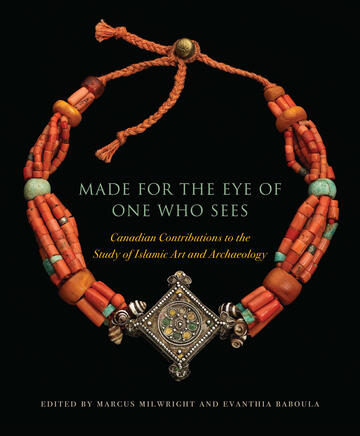
Made for the Eye of One Who Sees
Canadian Contributions to the Study of Islamic Art and Archaeology
A groundbreaking study of Islamic art and archaeology conducted by scholars and museum curators in Canada.
Description
Canada has seen the study of Islamic art and archeology grow steadily over the last five decades, with growth in research and teaching across numerous Canadian universities as well as important collections of Islamic art and archaeological materials, most notably at the Royal Ontario Museum and the Aga Khan Museum.
Made for the Eye of One Who Sees uncovers the contributions of scholars and museum curators at Canadian institutions to current scholarship on Islamic art. Employing a wide range of approaches and theoretical perspectives, contributors cover topics from across the Islamic world dating from the eighth century to the present. Subjects include the iconography of architectural design and decoration, the role of Qur’anic inscriptions, the representation of symbolic animals in sculpture, and the interpretation of Persian manuscript painting. The book also juxtaposes modern and contemporary worlds, providing insightful reflections on the early history of the Islamic collections at the Royal Ontario Museum, Matisse’s creative encounter with Byzantine and Islamic visual culture, and the ongoing dialogue between new media and the traditional concepts underpinning Islamic art.
Bringing together recent scholarship on Islamic art, architecture, and archaeology, Made for the Eye of One Who Sees provides an overview of the important contributions Canada is making to this rich and evolving field of study.
Reviews
“A book for the times, Made for the Eye of One Who Sees presents an engaging account of the successes and diversity in the field of Islamic art, architecture, and archaeology in Canada.” Alan Walmsley, director of the Materiality in Islam Research Initiative, University of Copenhagen
“Made for the Eye of One Who Sees represents a significant advance in Islamic art and history, bringing new materials and new interpretations into view.” Margaret Graves, Indiana University and author of Arts of Allusion: Object, Ornament, and Architecture in Medieval Islam